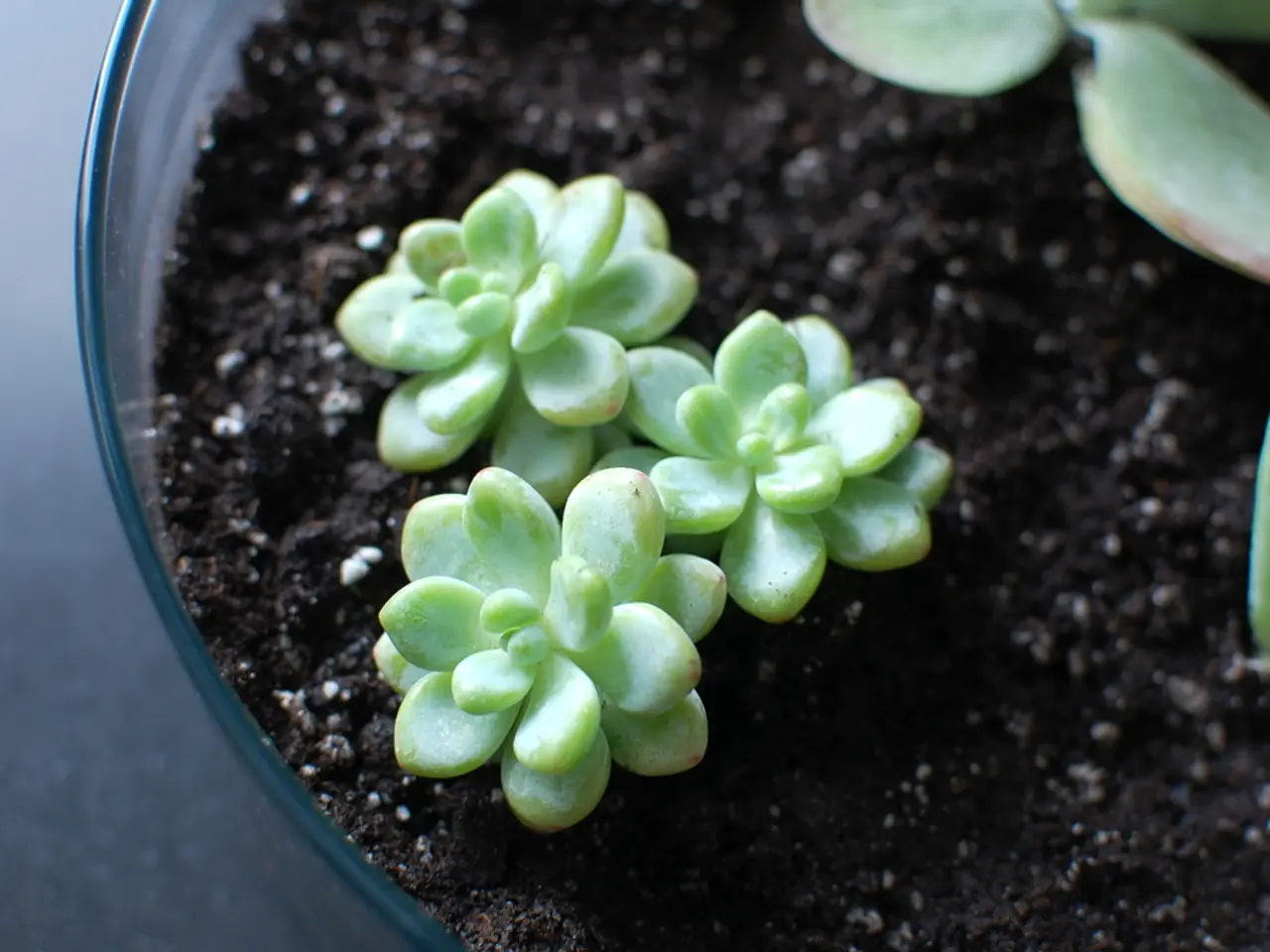Exploring the mysteries of topsoil: Unveiling the essence of this crucial component and guidance on purchasing the perfect type for your needs
Improving Your Garden with Topsoil and Soil Amendments
Topsoil plays a crucial role in gardening, serving as a rich source of nutrients and microorganisms essential for plant growth. This article will explore various types of topsoil and soil amendments, providing guidance on how to choose the right one for your garden.
Understanding Topsoil
Topsoil is the upper layer of soil, typically classified as the top two to eight inches of the soil profile. It consists of tiny rocks, organic matter, water, and air. Unscreened topsoil has not gone through a mesh, so it is likely to contain rocks, sticks, or roots and will not be as fine as screened topsoil.
Types of Topsoil
- Regular Topsoil: This is native or regionally formulated soil, usually a mix of sand, silt, and clay, often blended with organic material. It is used to add volume and improve the base soil structure in landscaping and garden beds.
- Mixed Topsoil Blends: These are enhanced topsoils that combine screened loam or topsoil with compost such as cow manure and coarse sand. They improve soil fertility, texture, and moisture retention, making them highly suitable for lawns and gardens.
- Compost and Organic Matter: Although not "topsoil" per se, compost (decomposed plant material), leaf mold, and aged manure are key organic additions that enrich poor soil with nutrients, improve soil texture, and support soil biology.
- Sandy Topsoil mixed with Clay Base: Adding good-quality topsoil on top of a clay-heavy base (common after construction) can restore a better growing environment. This mixture mimics natural garden soil before disruption.
Soil Amendments
- Sand: Sand is often added to improve drainage and soil aeration but should be used carefully to avoid creating overly sandy soil unless paired with organic matter.
- Lime or Sulfur: These pH modifiers can be added after testing soil pH to adjust acidity or alkalinity accordingly.
- Specialty Soil Amendments: These include products like peat moss, vermiculite, and perlite, which can help improve soil structure, water retention, and aeration.
No-Dig Gardening Approach
Instead of turning soil, this method adds organic material on top of the soil and uses natural processes (e.g., earthworms) to incorporate it gradually without disturbing the soil structure.
Choosing the Right Topsoil for Your Garden
For garden soil improvement, combining good-quality topsoil with organic amendments like compost and aged manure generally yields the best results. Using a topsoil blend that includes compost and some sand can enhance both fertility and structure, suitable for lawns and vegetable gardens. Avoid fresh manure and unprocessed wood chips to prevent plant damage or nitrogen depletion.
Before purchasing topsoil, it is recommended to inspect it for stones, roots, weeds, or other unwanted materials. A general-purpose blended topsoil is suitable for many different uses, and a soil conditioner mix adds peat moss and organic matter to your existing soil. Not all topsoil is the same; even in one garden, there can be different types of topsoil. Screened topsoil is high-quality soil that has been passed through a mesh to remove rocks, clumps, or roots, making it more consistent and easier to spread but more expensive.
In conclusion, understanding the various types of topsoil and soil amendments available is essential for creating a thriving garden. Choosing the right mix depends on your existing soil type, desired outcome, and whether you want to focus on organic buildup or structural amendment.
- For a thriving gardening lifestyle, consider incorporating raised flower beds with a topsoil blend that includes compost and some sand for both fertility and structure, making it suitable for a variety of plants.
- In home-improvement projects, landscaping with garden tools, it's crucial to choose screened topsoil for your home-and-garden improvements, as it is more consistent, easier to spread, and free of unwanted materials like rocks, clumps, or roots.
- To maintain a healthy home-and-garden environment and support soil biology, consider adding compost and organic matter, such as leaf mold and aged manure, to your existing soil during landscaping and gardening activities.
- For efficient watering and drainage of raised garden beds or lawns, consider incorporating sand or specialty soil amendments like peat moss into your landscaping practices as part of your home-improvement projects.




